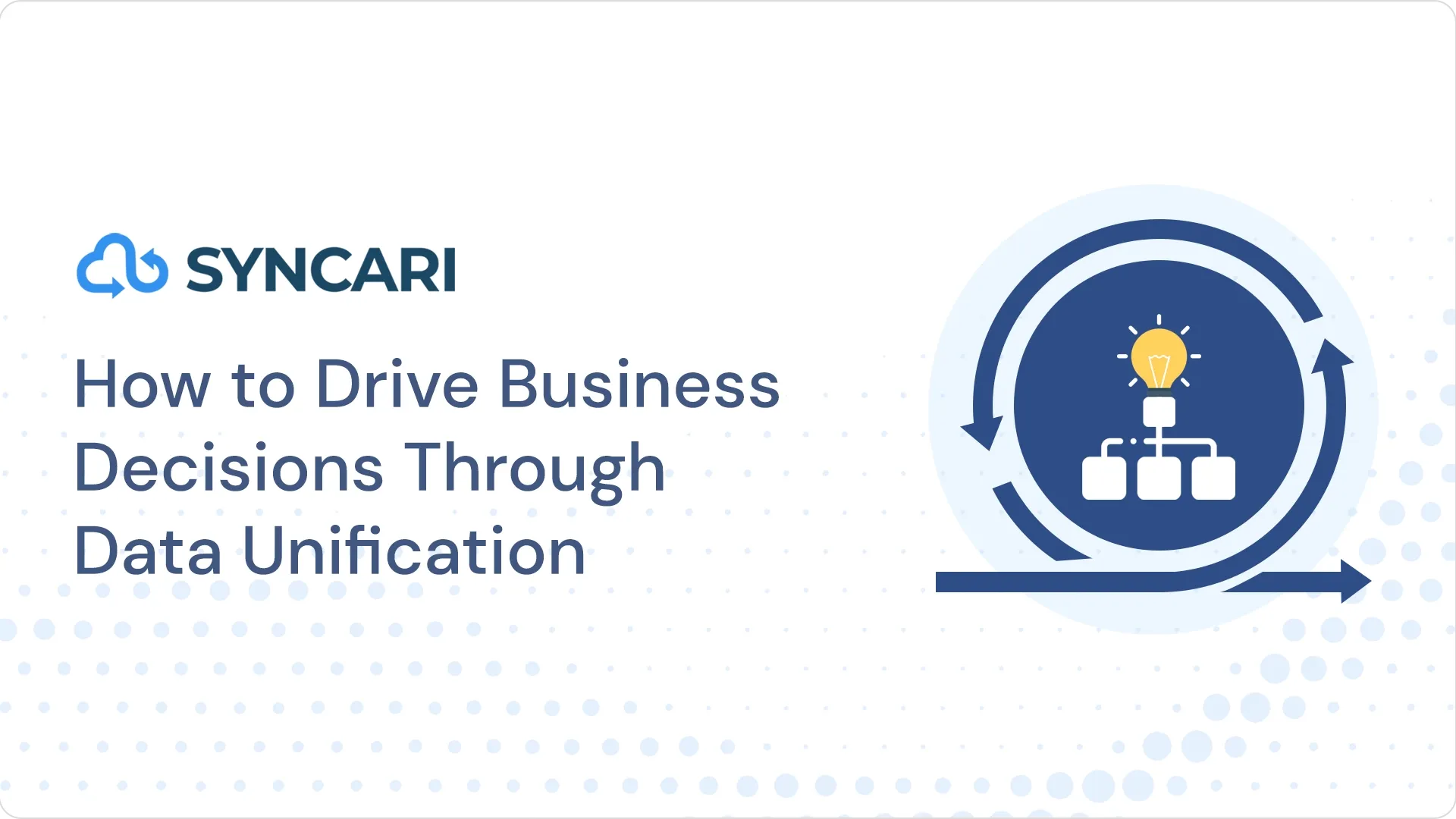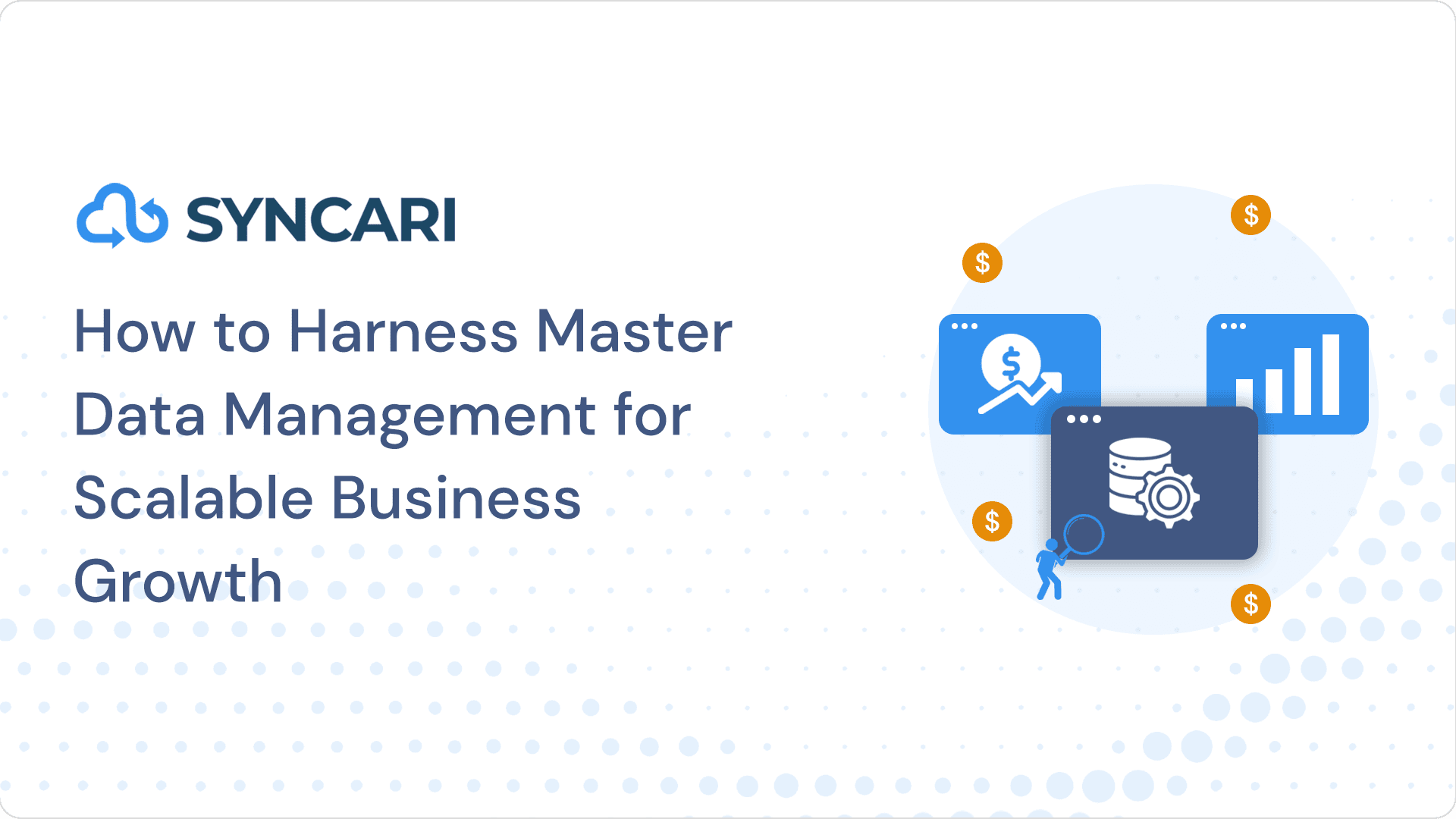TrayTrayTray and Workato are powerful platforms enabling businesses to automate their data workflows and processes. However, they have some essential differences that may make one a better choice for a particular business.
In this blog, we will explore the features and capabilities of Tray vs Workato and highlight the critical differences between the two platforms. This blog will also help you understand if there are any Tray and Workato alternatives that you should look at.
Tray.io Platform Explained
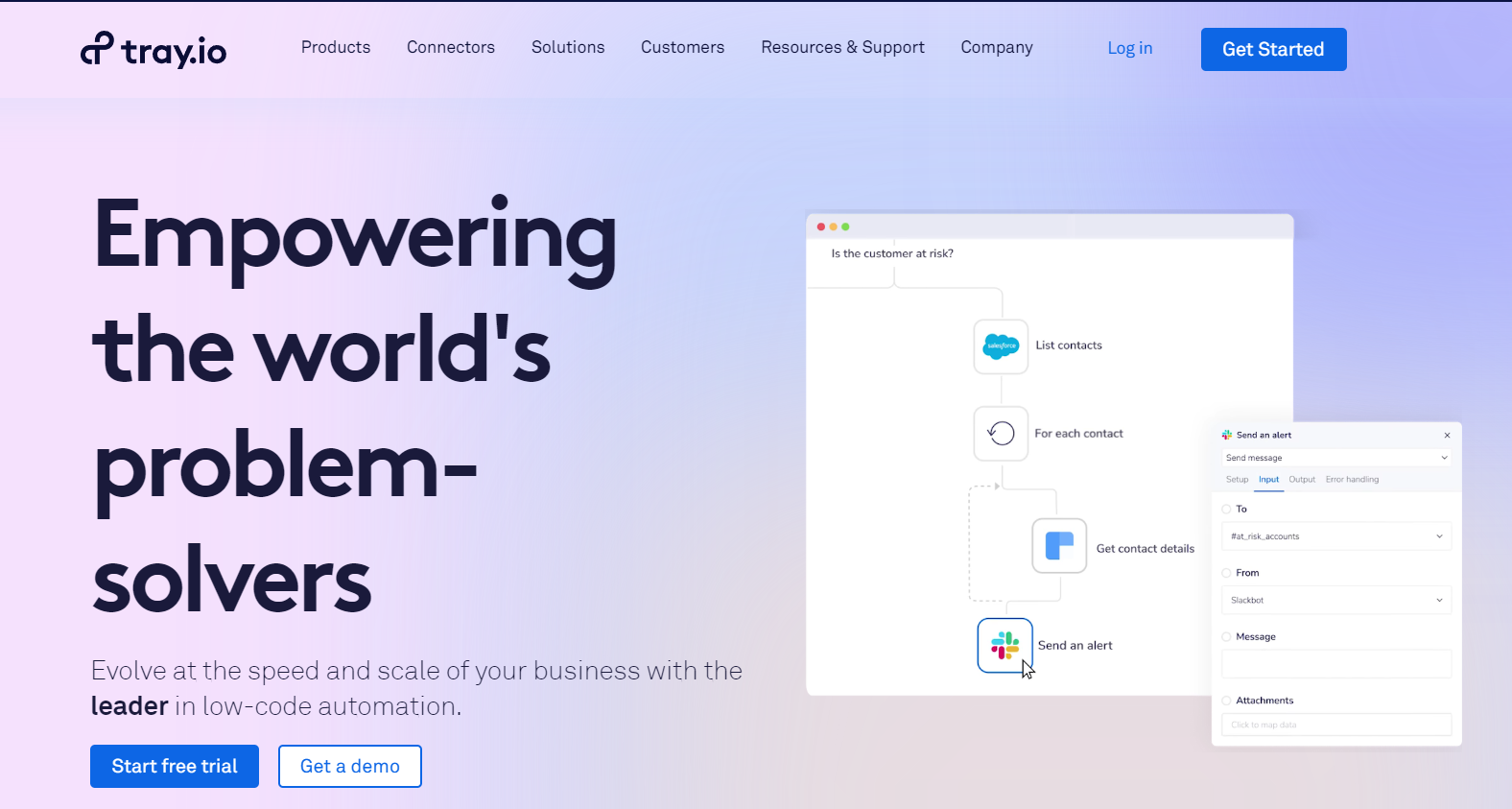
First, let’s start with an overview of Tray. Tray is a cloud-based automation platform that allows businesses to build, automate, and optimize their workflows across various applications and services. It offers a visual drag-and-drop interface that makes it easy for users to connect and automate various systems and processes.
Who uses Tray.io?
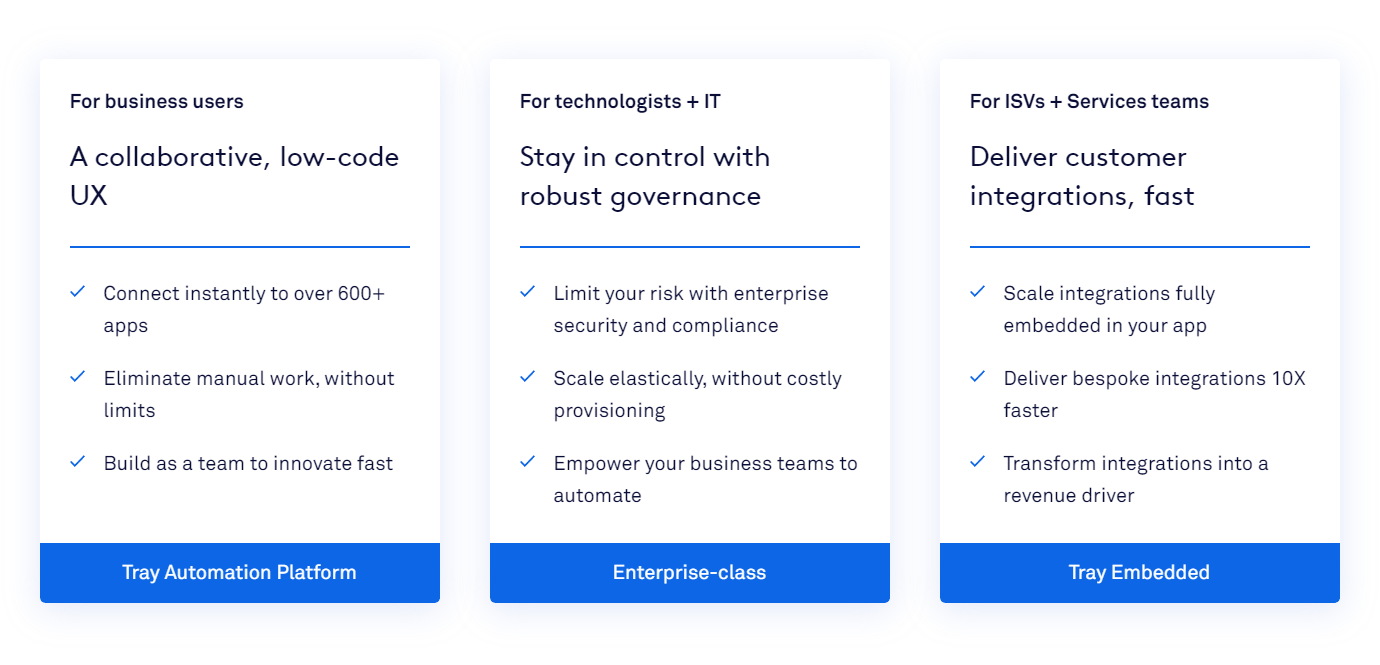
Some of Tray’s customers include Cisco, Udemy, Outreach, Mixpanel, and Twilio Segment. Tray is used by mainly three types of users within a company:
- Business Operations: Operations teams that work to integrate multiple software use Tray frequently to automate different tasks
- The IT team: IT teams within a company can use Tray to eliminate data silos by improving the integration between multiple software while being secure and compliant
- ISVs and Product teams: Product and ISV teams can use Tray to build integrations to pass data without much engineering effort rapidly.
Features:
Tray.io has two products.
- Tray Embedded
- Tray Platform
Tray Embedded: Integrate quickly in minutes
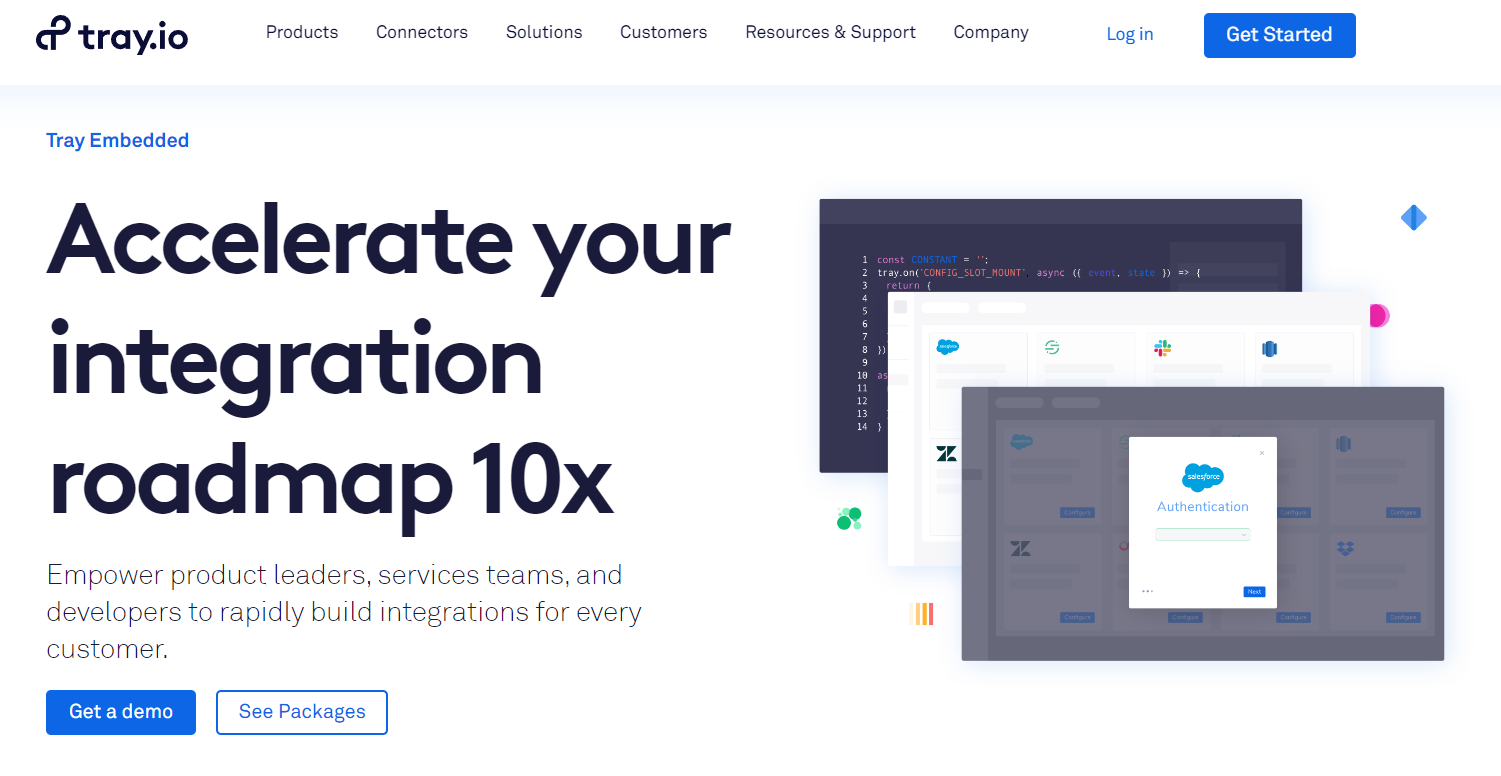
One of Tray’s products, “Tray Embedded”, supports over 1000 integrations with popular applications and services, including Salesforce, Google Sheets, Slack, and many more. It helps your business increase its integration breadth without much engineering effort.
Depending on the user, Tray Embedded has various sub-features.
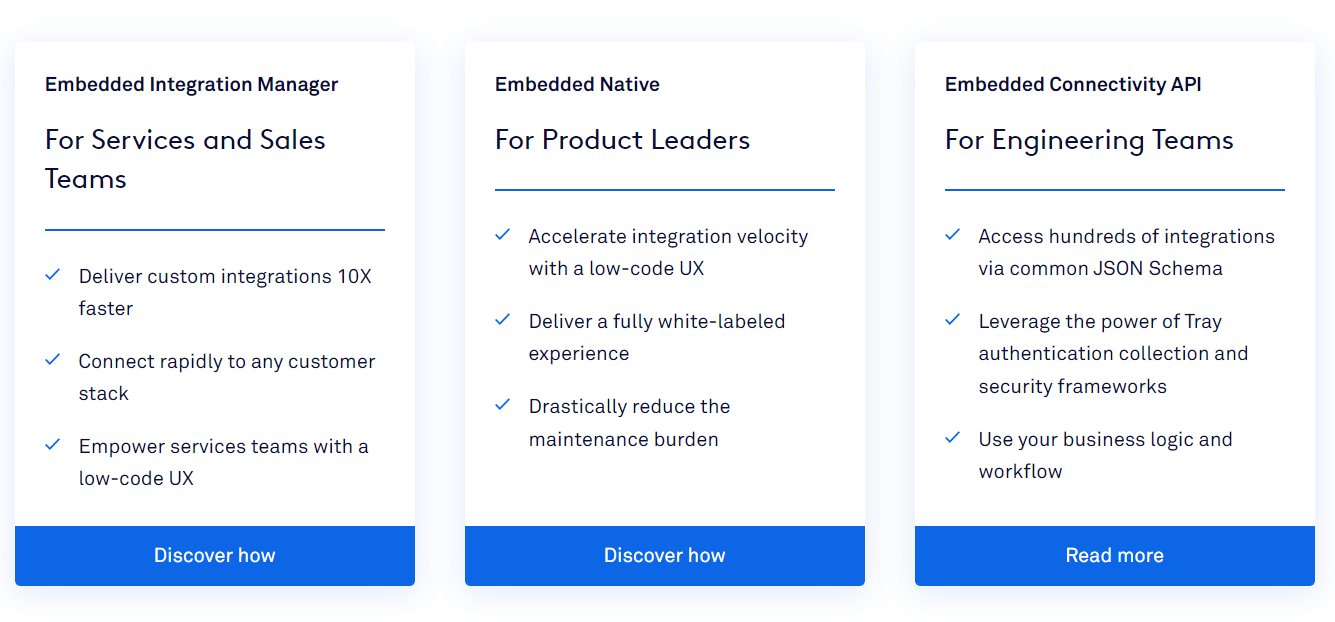
- For ISV teams:
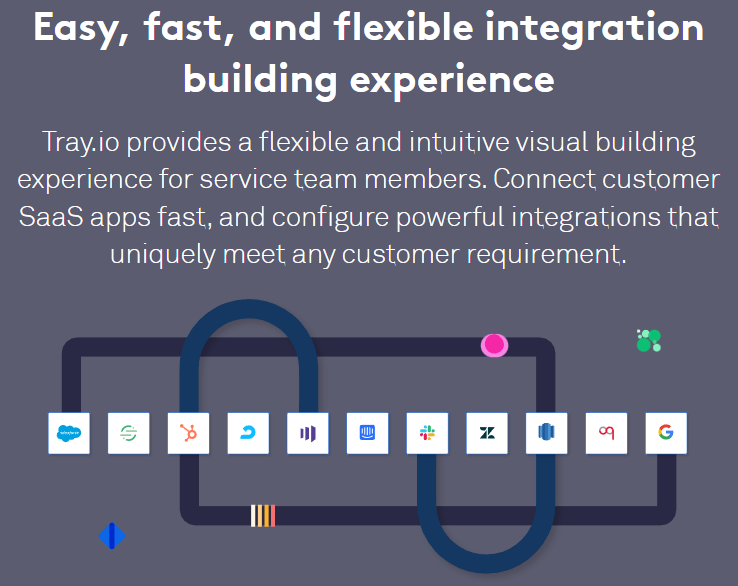
Tray Embedded has an Integrations Manager, an easy-to-use UI where you can build integrations to automate complex workflows and perform data transformations across multiple software.
- For Product Leaders:
Tray provides a core set of APIs and an embeddable configuration wizard that lets users choose, customize, and deploy any integration in just a few clicks.
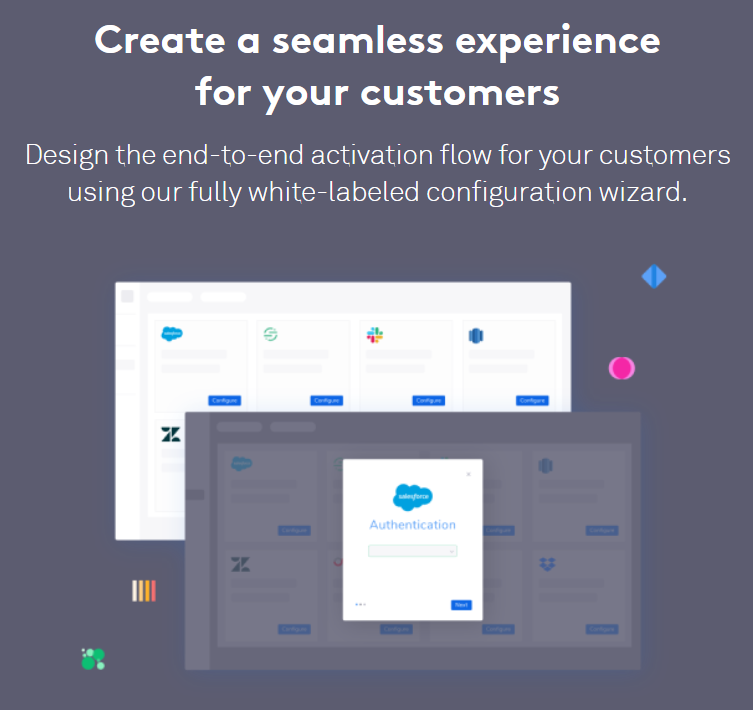
- For Engineering teams:
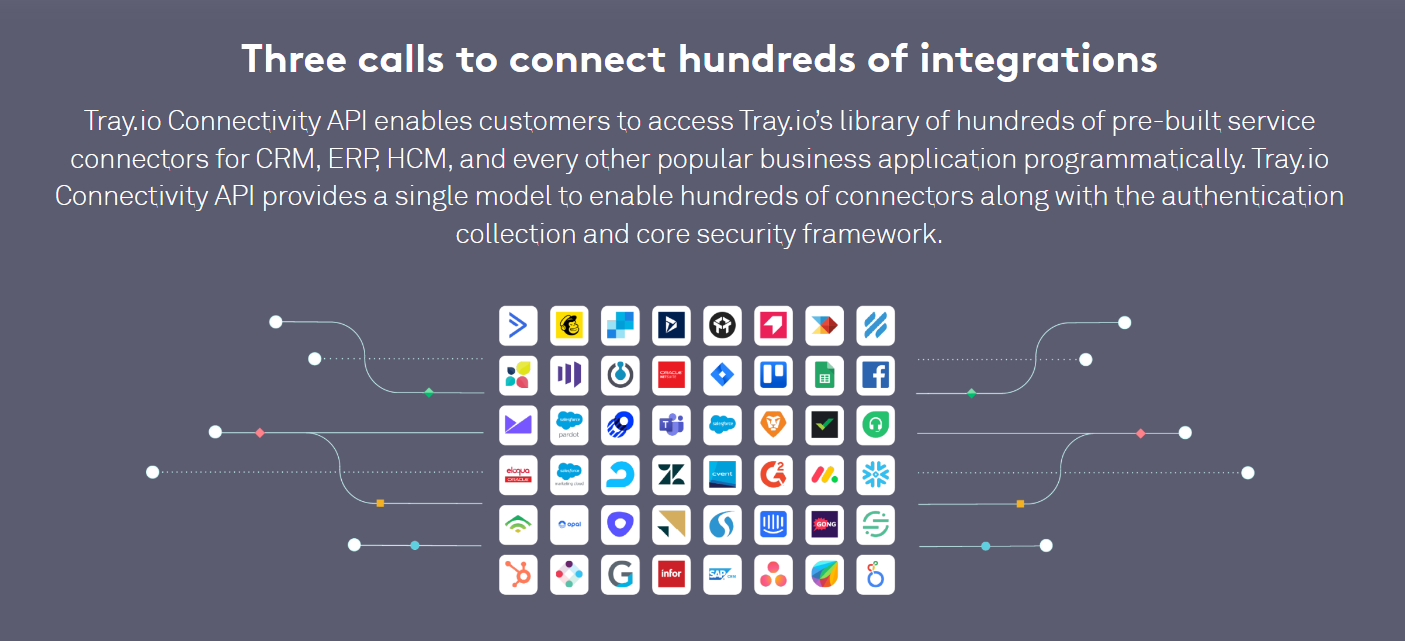
Tray’s Embedded Connectivity API provides instant access to an extensive library of connectors. Instead of investing valuable resources to understand and maintain each integration connector your customers need, your business can call on Tray.io’s Connectivity API to increase delivery speed without compromising quality.
Tray Platform: Create Automated Workflows easily
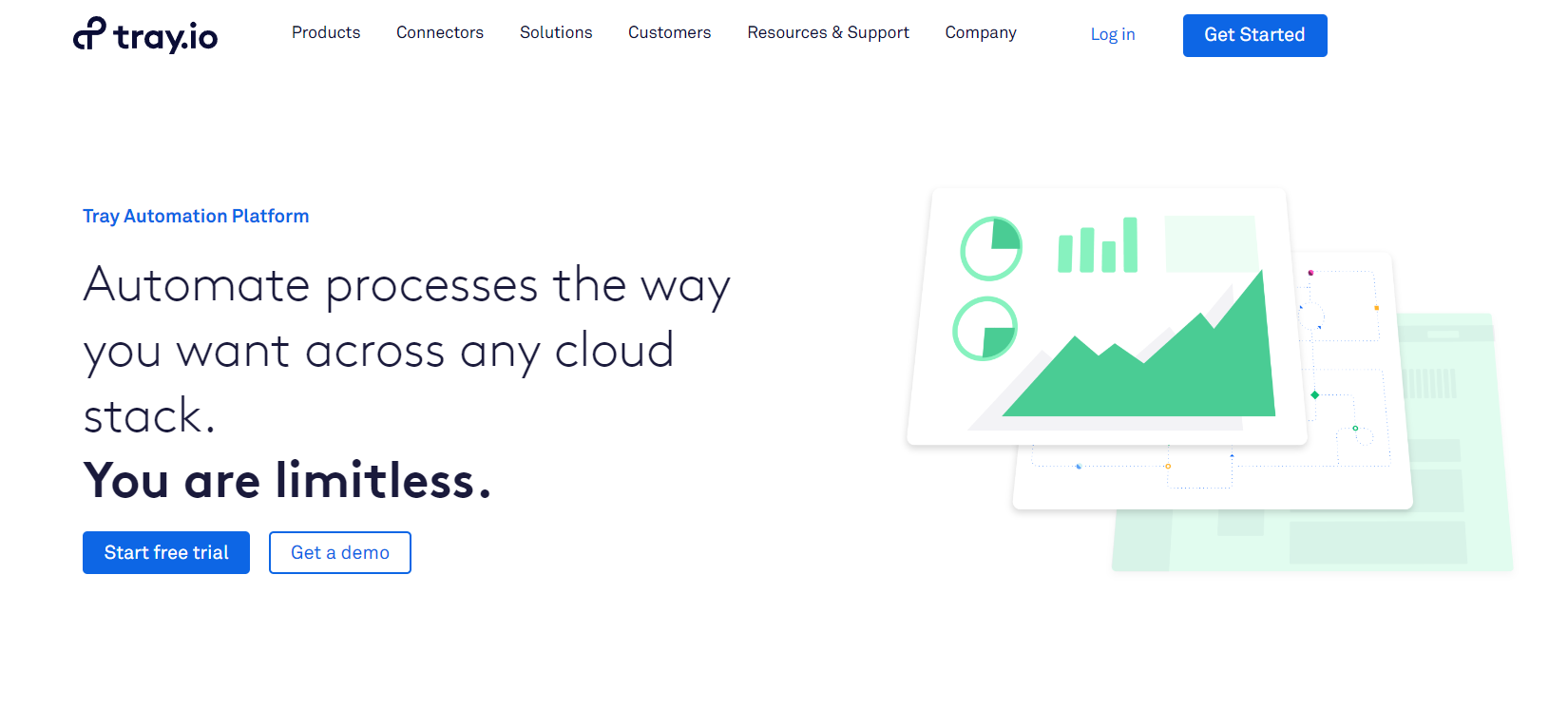
Tray allows users to build complex automations and connect different software using a variety of triggers and actions. Users can create custom logic and use data from multiple sources to drive their automations with drag-and-drop elements.
Advanced features:
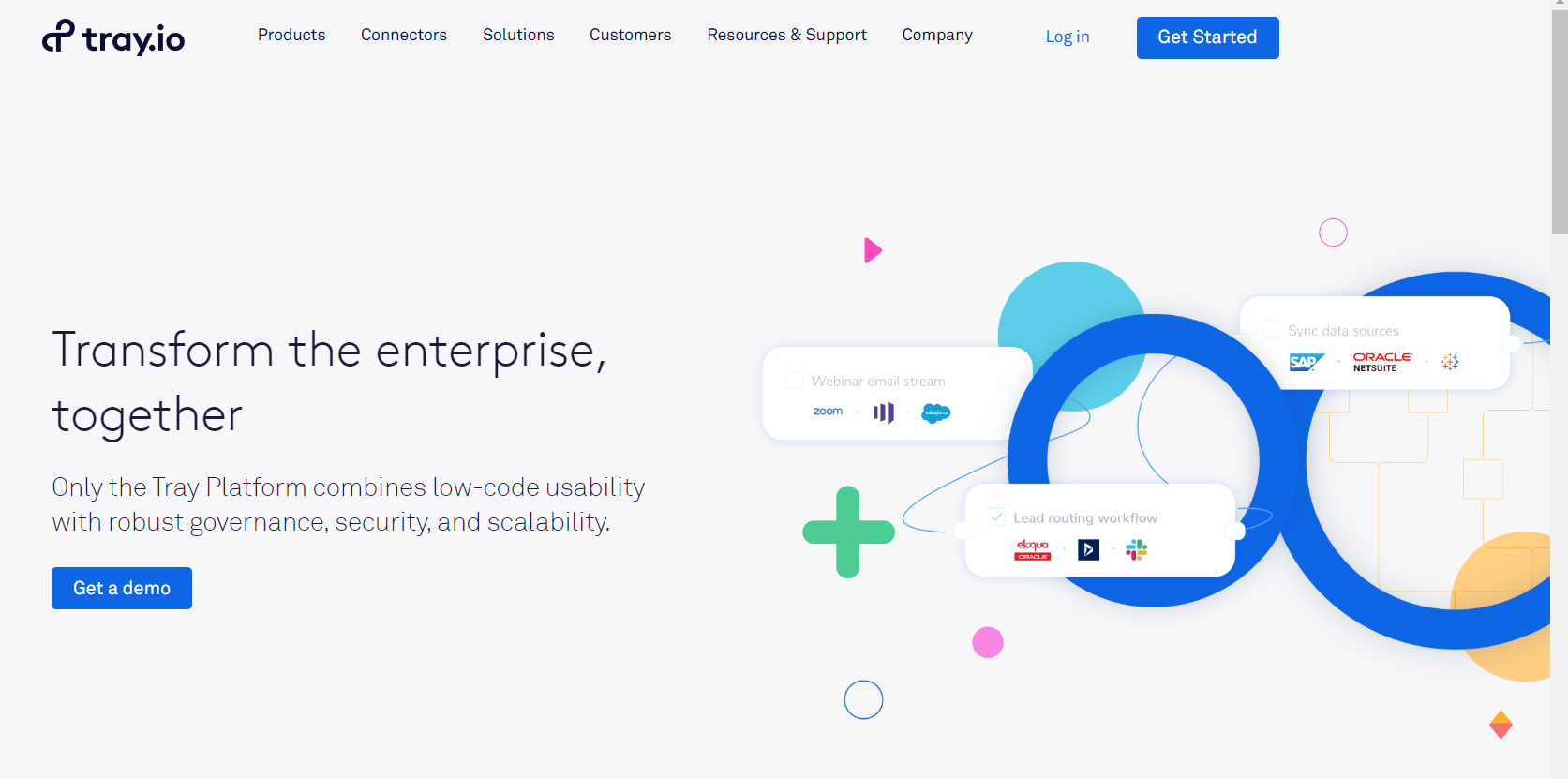
Tray offers advanced features such as data mapping, data manipulation, and error handling, which allow users to build highly customized automations.
- Enterprise-grade security and compliance

Take advantage of Tray’s enterprise-grade compliance to encrypt data and secure it across teams.
Pricing:
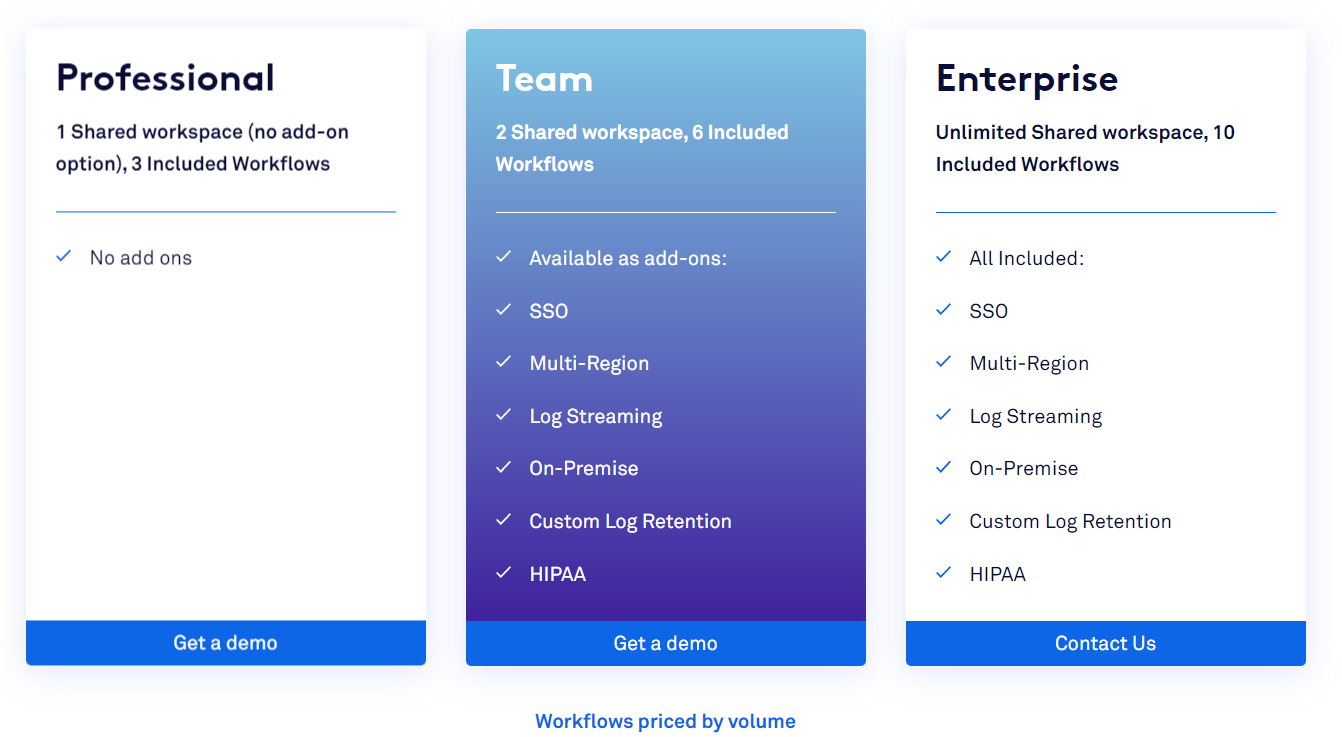
Tray has three pricing editions, as they like to call them. While there’s no information on the website regarding the pricing, if you do a quick google search, you will notice that the pricing starts at $500 per month, with further prices based on usage volume.
What is Workato?
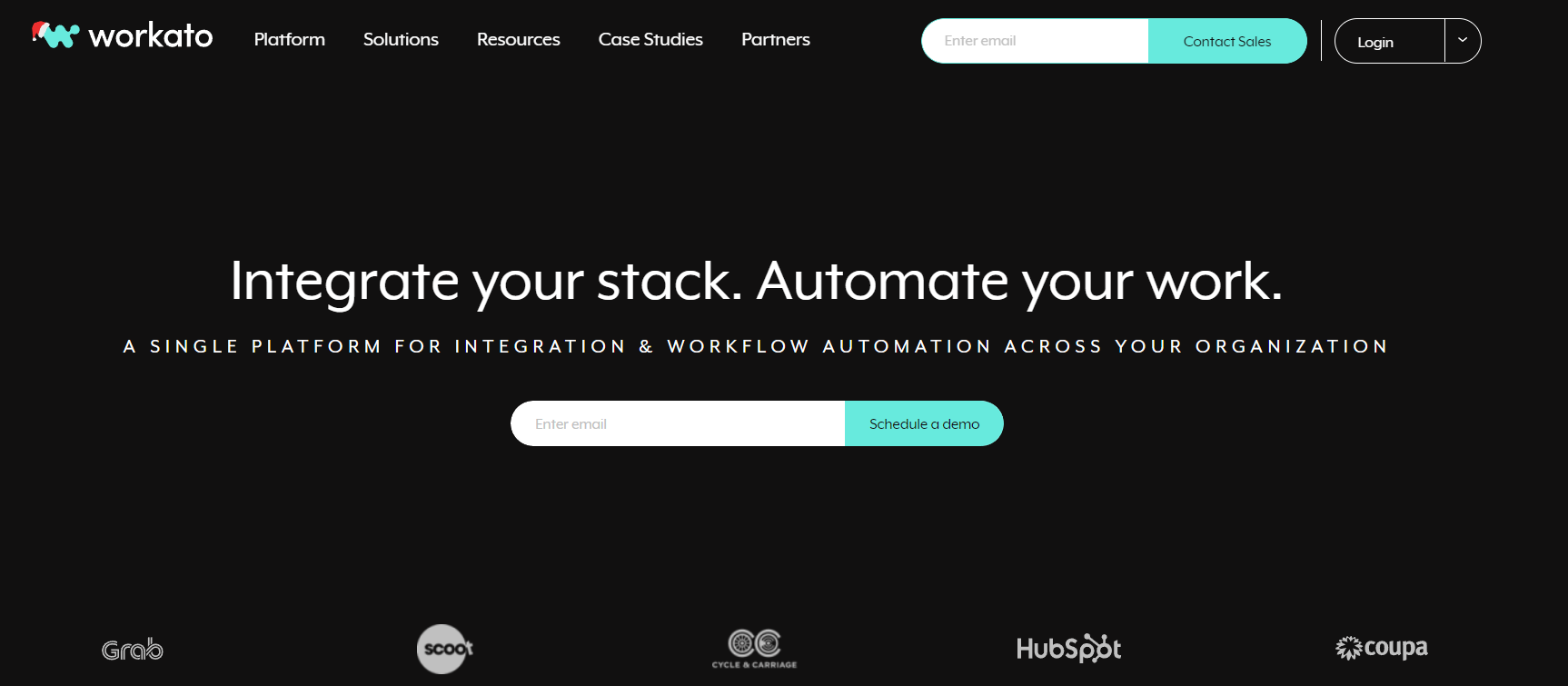
Now, let’s take a look at Workato. Like Tray, Workato is a cloud-based automation solution that helps businesses integrate their databases across multiple software, thus eliminating the need for a manual process. It offers a range of integrations and allows users to build custom automations using a visual interface.
Who uses Workato?

Some of Workato’s customers include Zendesk, Atlassian, Adobe, and MGM. Enterprise companies mainly use Workato. The following teams use Workato regularly.
- IT: To resolve threats automatically and create an automated internal helpdesk
- Marketing Ops: With automatic ABM orchestration, multi-touch attribution, etc
- Sales Ops: To automate CRM hygiene and lead management
- HR: With automated employee onboarding, approvals, etc
- Support: Automate ticket routing and follow-ups
- Product: Connect apps to build integrations quickly without engineering help
- Finance: Automate bank reconciliation and reporting
Top Features of Workato:
Workato has similar features to Tray. Some key features of Workato include:
- Integrations:
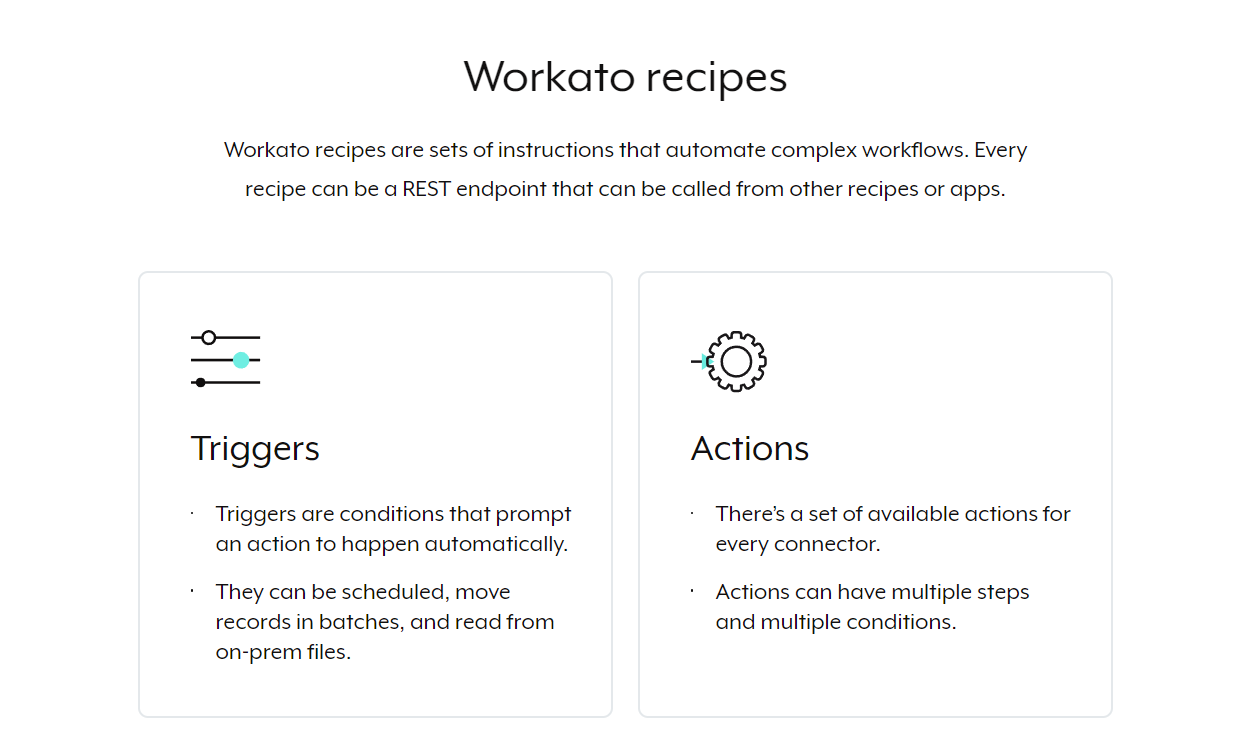
Workato supports over 1500 integrations with popular cloud and on-premise applications and services, including Salesforce, QuickBooks, Slack, and many more. Workato calls these recipes. Using this solution, you can automate any manual process by integrating various software using an intuitive UI.
- Enterprise-grade workflow automation:
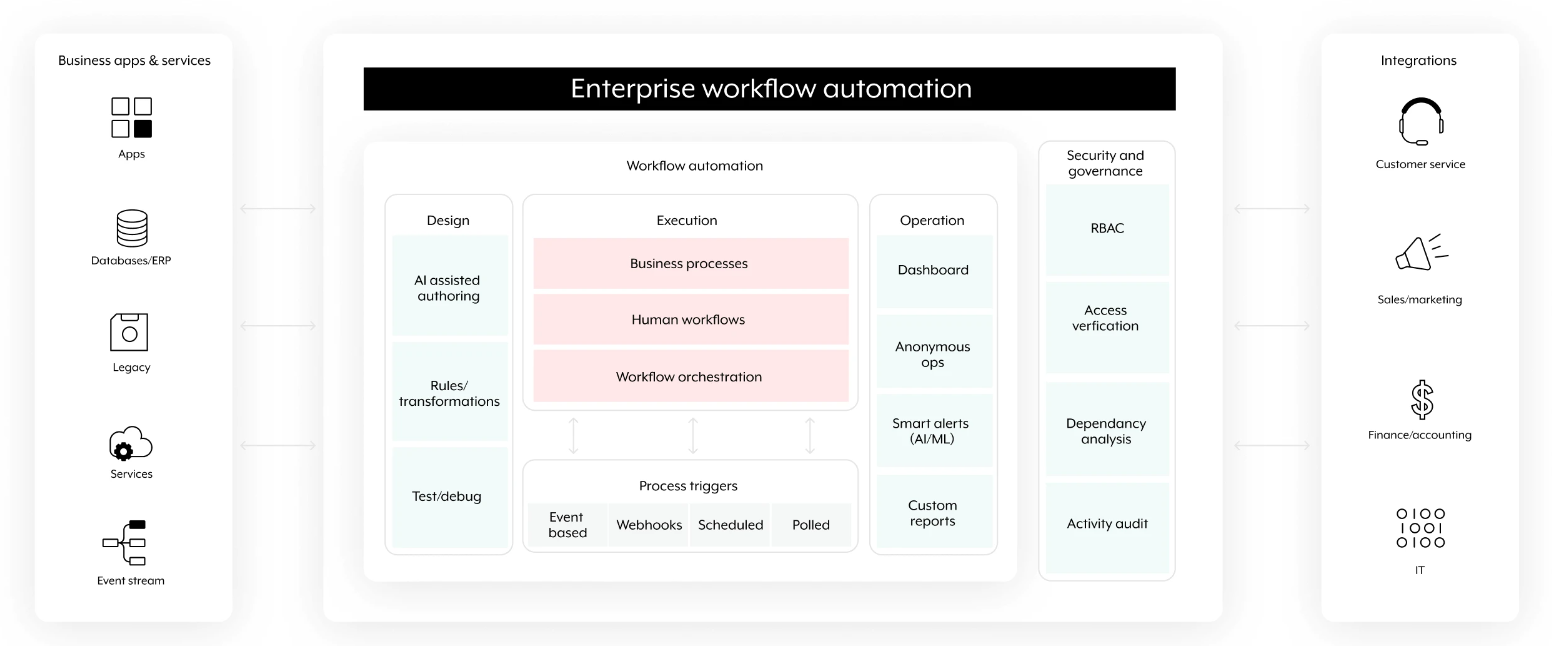
Workato allows users to build complex automations using a variety of triggers and actions without coding. Users can create custom logic and use data from multiple sources to drive their automations.
- Advanced features:
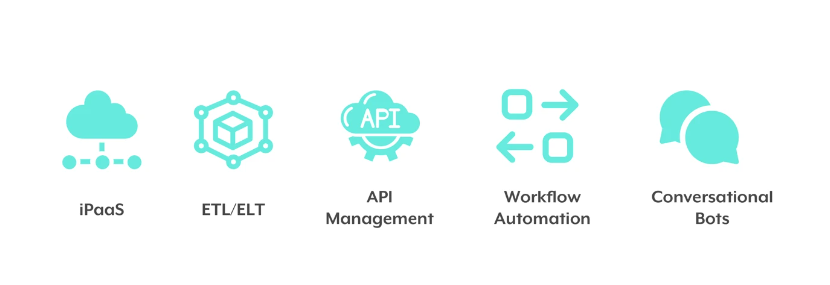
Workato’s Enterprise-grade iPaaS offers advanced features such as ELT/ETL, data mapping, data transformation, and error handling, which allow users to build highly customized automations.
Pricing:
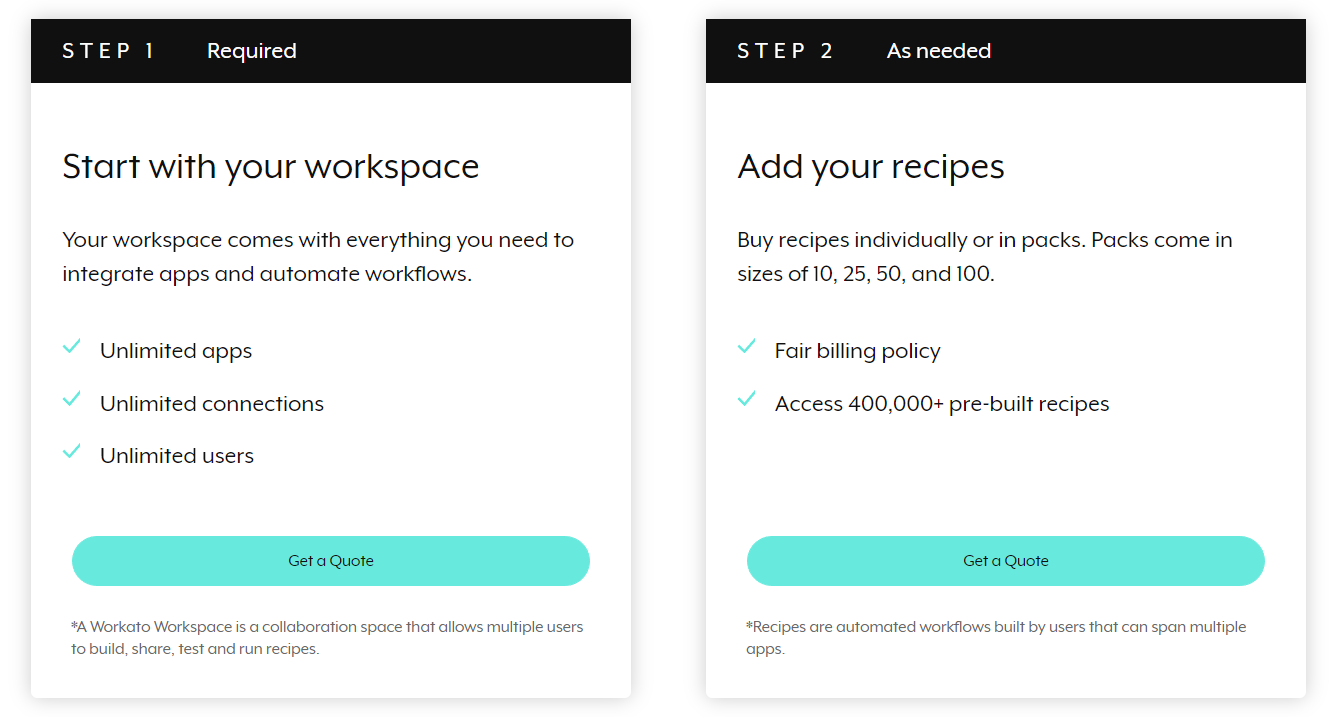
If you go to Workato’s pricing, you will see something like this. So what exactly is their pricing? How much does it cost?
Workato has a base pricing, and then there are extra charges based on the number of API connectors you need (Recipes). Estimates for their annual packages range from $15000 to $50000 depending on your business’s requirements.
Comparison: Tray.io vs Workato
So, what are the critical differences between Tray and Workato?
G2 Scores:
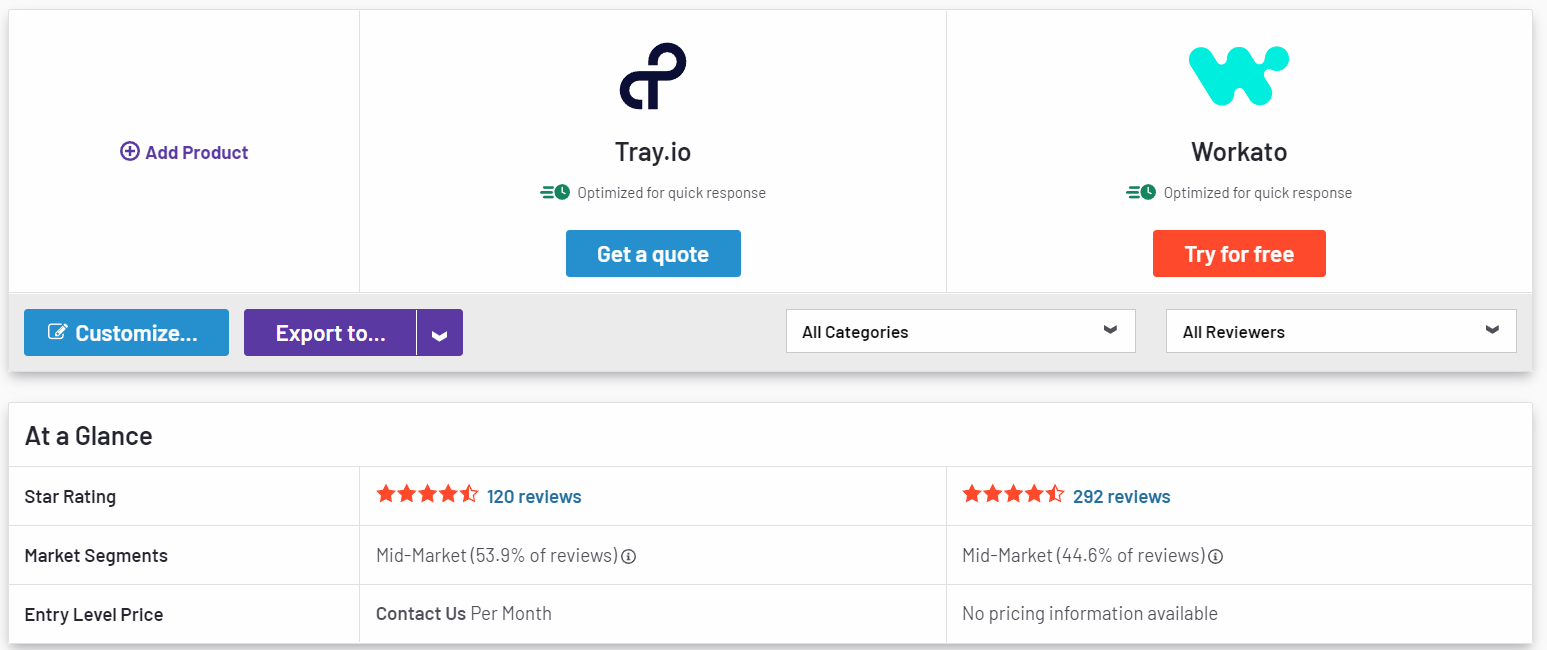
If you happen to do a quick google search of “Tray.io vs Workato”, it’s likely that you will come across this site called G2. G2 is one of the leading software marketplaces. It collects and compiles data and reviews from multiple customers.
Tray has a score of 4.6 out of 5 from 120 reviews, while Workato has a score of 4.7/5 from 292 reviews.
Features:
One of the main differences is the platform’s range of integrations. While both Tray.io and Workato offer a wide range of integrations, Workato has a more significant number of integrations available. Additionally, Workato offers several features specifically designed for integration with enterprise applications, such as SAP and Oracle.
Pricing:
Another key difference is the pricing structure of the two platforms. Tray.io offers a flexible pricing model that allows businesses to pay for only the needed features. Workato, on the other hand, has a fixed pricing structure that won’t change based on usage.
So which should you go with?
If you are from the revenue operations team, neither of these solutions is the best fit for your team.
Introducing Syncari:
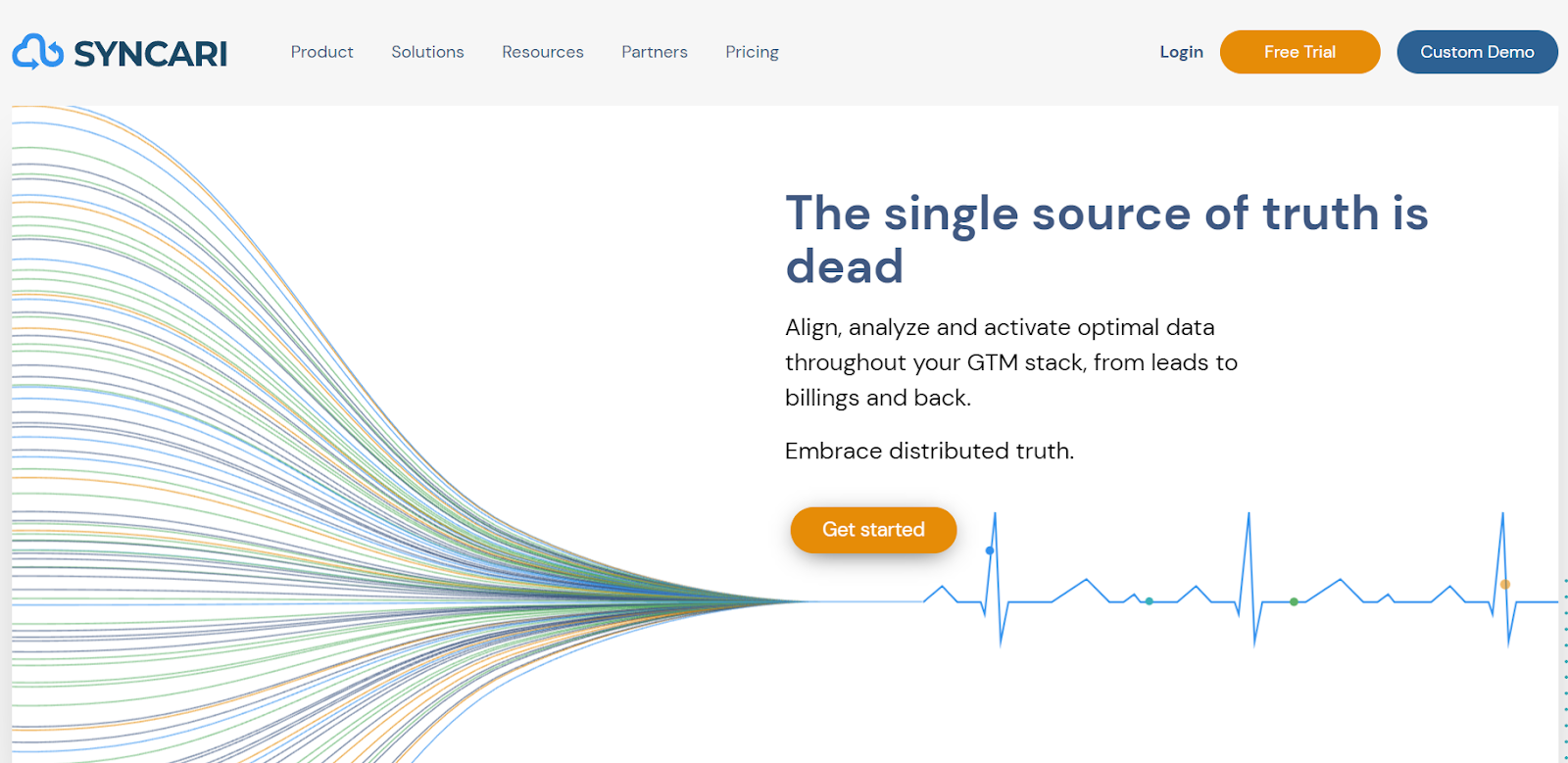
Syncari, founded in 2019, is a no-code cloud-based data integration and activation platform for organizations and their Rev-ops teams. It offers a range of ready-to-deploy data connectors for popular cloud apps to help users shape and structure their data.
Even though it’s a rookie compared to Tray.io and Workato, it can boast of customers like Chargebee, Dooly, and Metadata who use it to save overhead costs and reduce time spent on data management.
Who can use Syncari?
Data-dependent teams from any business can use Syncari. These include
- Revenue operations
- Sales operations
- Marketing teams
- Data analysts
- IT operations
Key Features:
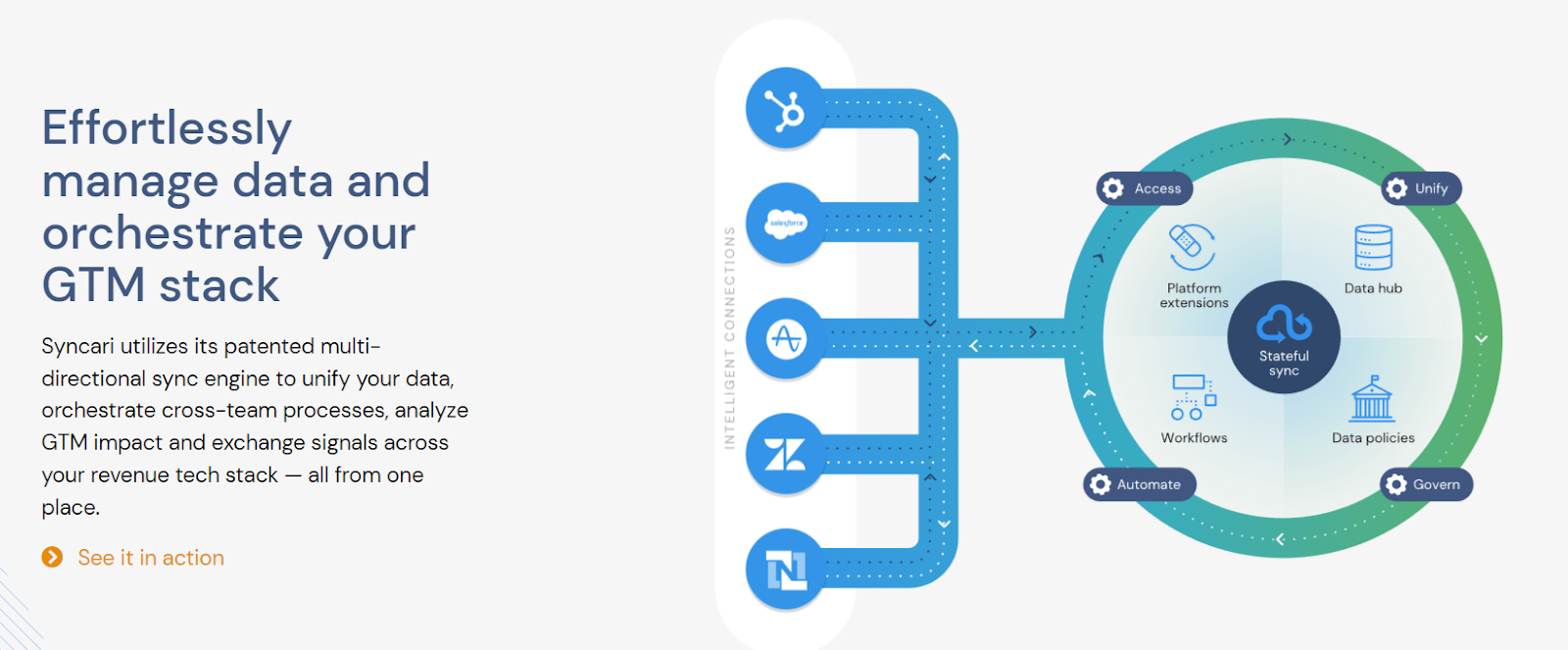
Use pre-built connectors to integrate multiple software that are a part of your GTM stack. Use a drag-and-drop builder to connect and deploy without coding.
Unify data and create a data hub from multiple databases. Then grant access to multiple teams depending on their requirements.
Continuously improve the accuracy and consistency of cross-system data across your entire tech stack.
Coordinate workflows across the business using quick-start templates or with 100s of no-code functions.
Visualize GTM performance with real-time analytics and use these insights to improve efficiency.
Syncari Pricing:
Syncari’s pricing is based on the number of records you manage, making it easy to predict costs and avoid unexpected expenses. Each Syncari instance includes pipelines, connectors, API calls, tasks, and transactions. Build unlimited pipelines, connect multiple systems, and run them as often as needed, all without worrying about additional costs.
Choose yourself: Syncari vs Tray.io vs Workato
With a similar set of features and multiple enterprise-grade customers, it comes down to ratings and value-added services.
G2 Score:
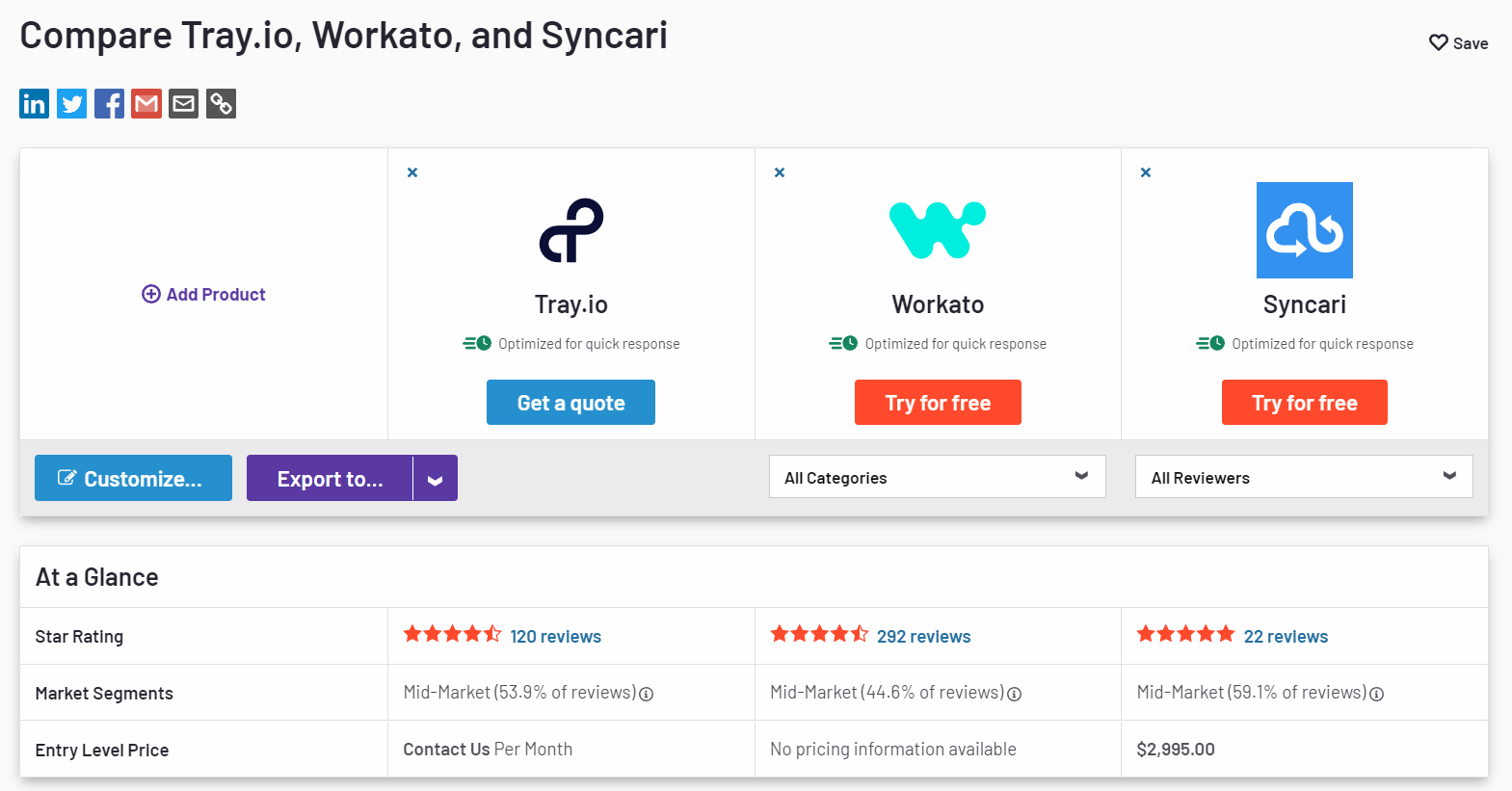
Syncari has a score of 5 on 22 reviews, while less than the other two, it has the highest number of mid-market and enterprise customers.
Features:
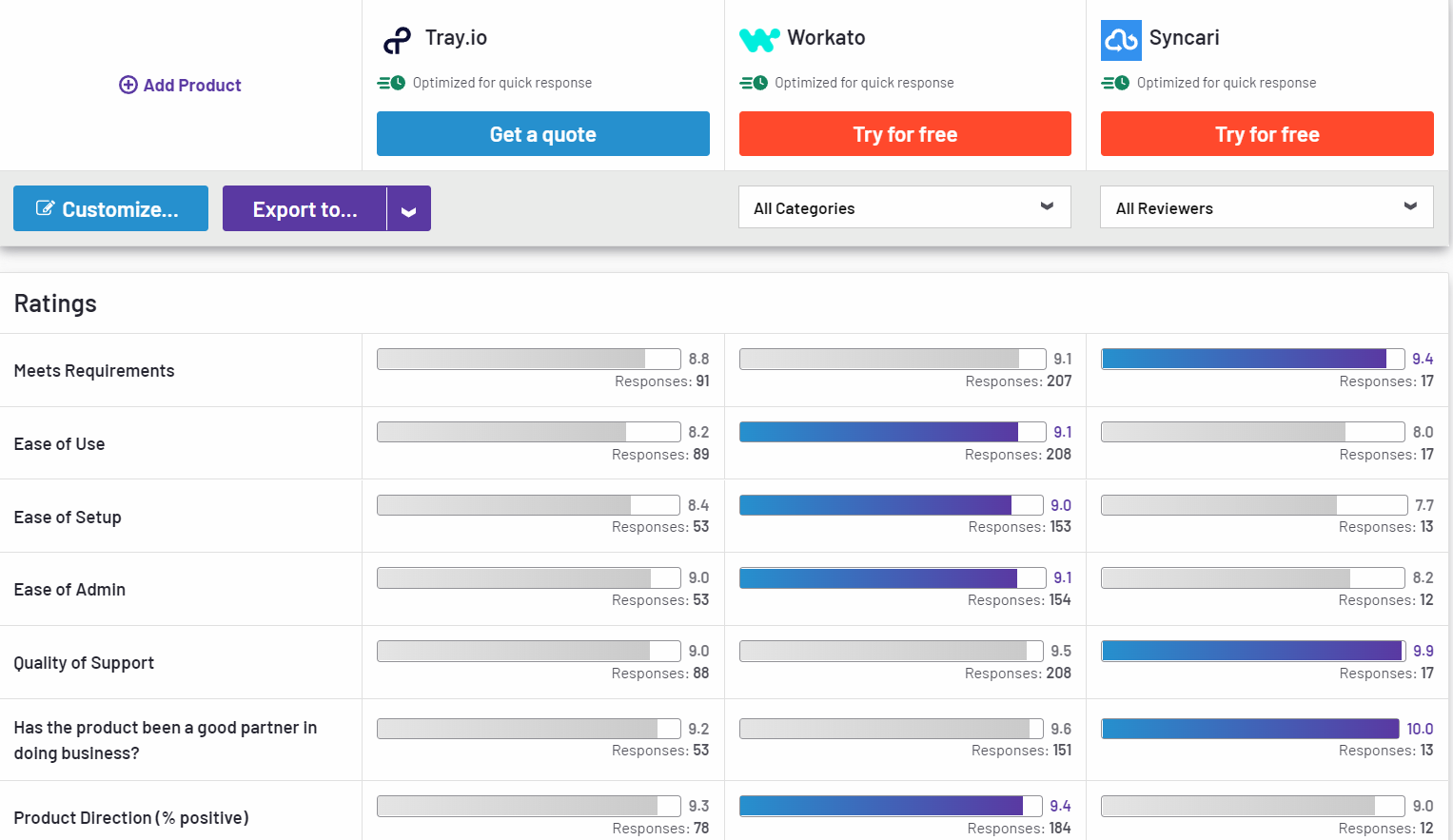
If you take a close look at the ratings of Syncari, it’s the leader in customer support by a pretty big margin.

Conclusion:
Overall, Syncari, Tray, and Workato are powerful automation platforms offering a wide range of integrations and advanced features. The best choice for revenue-operations teams tends to be Syncari.
Align GTM teams with Syncari, starting today.

